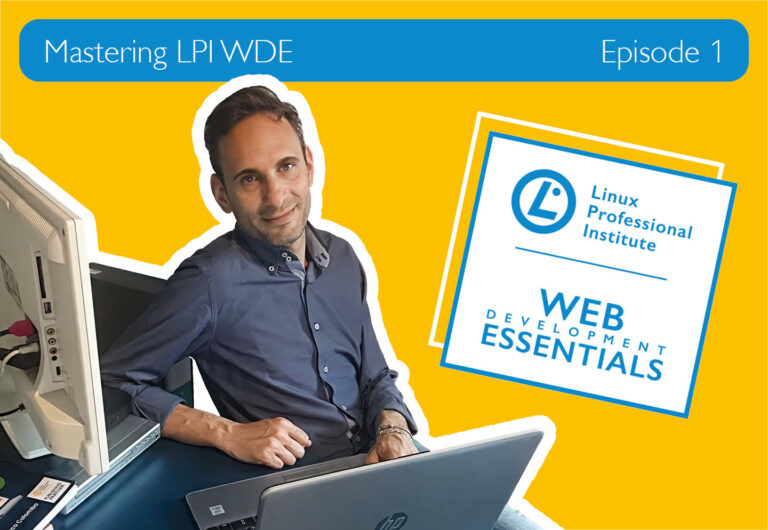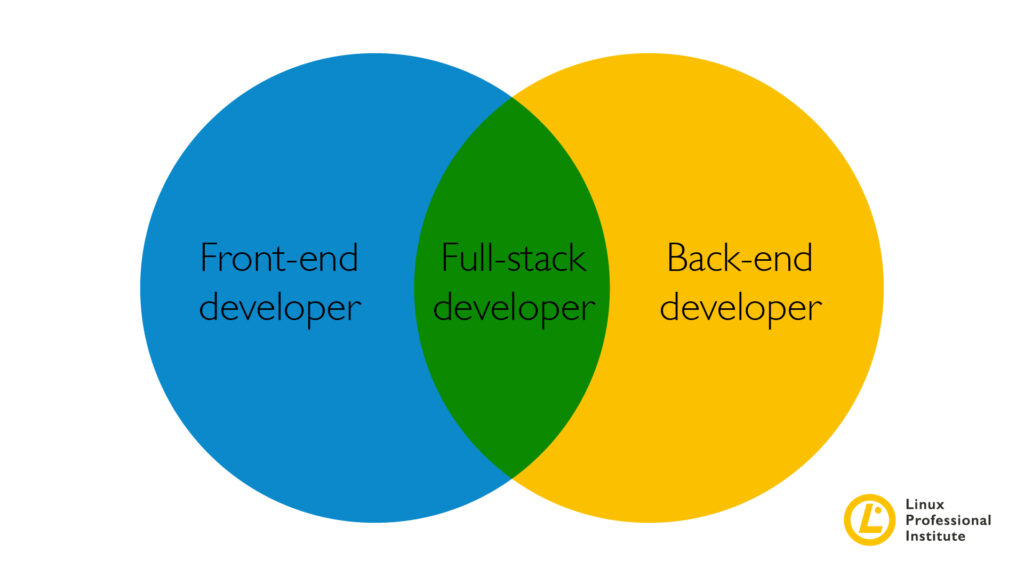Mastering LPI WDE #1: Your Path to Creating Stunning Websites

In modern society, replete with social media, online sources of information, and applications of all kinds, a website is a fundamental requirement for every organization. The website allows a company itself to explain in detail what it does, detail its services, find and retain customers, sell online, and be more competitive.
While the Web is one of the preferred means of communication for companies, ordinary users see it as a fundamental tool for finding and accessing the most disparate content and at the same time satisfying their needs.
Continuous technological innovations related to the Web allow the creation of more fully featured and visually appealing websites. But where to start when you need to create a website?
Linux Professional Institute (LPI) has designed a new certificate called Web Development Essentials that will allow you to learn step by step the fundamental tools and ideas for creating websites. In this posting, we will take a journey together through the objectives of the exam, to make your journey to get the certificate as smooth as possible!
A certification for developers…
The goal of a web developer is to create functional websites and web applications that adhere to project specifications and provide the best possible user experience.
In the journey to certification as a web developer, you will learn how to deal with what we could consider the concrete, brick, and steel of which the internet is made. You will appreciate and learn the basics for creating simple and attractive websites, along with further insights and in-depth knowledge to continue your professional growth.
The main technologies covered by the certification are:
- HTML
- CSS
- JavaScript
- Node.js
- Databases
HTML and CSS
The HTML language, acronym for HyperText Markup Language, is the natural starting point for a certification path of this kind, as it is used to define the structure and content of a website. HTML is closely related to Cascading Style Sheets (CSS), which is used to apply styles to web pages, making them visually more attractive.
JavaScript, Node.js, and Databases
JavaScript is a scripting language that makes web pages dynamic, allowing users to interact with them. While JavaScript was designed originally to run in the visitor’s browser, Node.js is a runtime environment that executes JavaScript on the server. Node.js can handle, among other things, integration with relational and non-relational databases.
This certification path is ideal for those who want to become web developers, that is, to become expert in programming languages for the purpose of designing, developing, and managing websites and web applications.
… But not only that!
The certificate can also be useful if you deal with more managerial aspects of your business (I’m not a programmer myself!), as you will gain the basic technical knowledge essential to form a team that can create a website. Moreover, you will be able to improve your knowledge and skills in the Web environment. This background is extremely useful during the life cycle of any project, from defining the specifications and technologies employed to building and deploying the project itself.
An IT manager or project manager should have a knowledge base that allows them to provide adequate support to the technical team in every phase of the project, defining the best timing and optimal strategies for the realization of the project. A manager who has such knowledge will also be naturally more inclined to propose the best solutions for solving any problems that may arise, redefining project timing and specifications even during the project’s development.
Front-end versus Back-end and Full-Stack Development
ICT work opportunities are constantly increasing, and professional specializations payments are becoming more and more numerous. If you have ever looked for a job as a web programmer, you have surely come across terms such as front-end programmer, back-end programmer, and full-stack programmer.
Don’t get confused. Every professional belonging to one of these categories has some basic knowledge in common, to which more specific ones can be added.
The term front-end programming refers to the creation of the part of the website visible to the end-user and processed in the browser on the client side. A front-end programmer must therefore know the HTML, CSS, and JavaScript languages very well and must be able to design websites from both a graphical and content point of view, allowing the end-user to interact with them in a simple and intuitive way.
Additional knowledge for a front-end developer includes specific frameworks and libraries such as React, Angular, VueJS, jQuery, and Bootstrap. Although not directly included in the Web Development Essentials certification, it lays the basis for picking them up for those who want to specialize in front-end programming.
On the other hand, back-end programming refers to the server side; that is, to all aspects not directly visible to the end-user. A programmer of this type works behind the scenes, creating the functioning logic of the application. Integration with a database, security, and data protection are just some of the fundamental elements that a back-end developer must consider.
In addition to the aforementioned Node.js, other programming languages the back-end programmer should know include PHP, C#, Java, and Python. These languages are not covered in the Web Development Essentials certification, but their knowledge is useful for improving one’s skills as a back-end developer.
A full-stack developer has knowledge of both front-end and back-end programming: in other words, a well-rounded developer! A professional of this type has extensive technical training on both the server side and client side and is able to design, develop, and distribute complete websites and web applications.
Where do you stand?
During the learning path we are starting together in this posting, you will discover whether you prefer to focus more on the visual aspects of a website or operate behind the scenes on the server side–that is, whether you prefer to specialize in front-end programming or back-end programming. Whatever path you decide to take, remember that it is essential to know both sides of the coin for the successful completion of a project. Thus, a front-end developer must also be aware of the functioning logic of an application, including interaction with a database. Similarly, a back-end developer must know the basics for creating web pages from both a structural and visual point of view, as well as from the perspective of user interaction. Front-end and back-end programmers must, in fact, cooperate with each other in all project phases, A knowledge gap in one of the basic programming aspects can make collaboration difficult and undermine the successful completion of the project.
If you are able to navigate front-end and back-end technologies equally well, you can work as a full-stack programmer. Possessing the technical skills of both the aforementioned roles, you will be able to take care of all aspects of the project for the realization of websites and web applications, easily and naturally.
The types of knowledge just described are summarized inFigure 1. It shows how a full-stack developer is a complete professional figure that incorporates technical knowledge on both the front end and the back end.

Fig. 1: Knowledge graph of front-end, back-end, and full-stack developers
Upcoming articles in this series will briefly describe each of the aforementioned front-end and back-end languages and tools, providing an overview of their functions and showing how to create an interactive website from a basic text editor.
